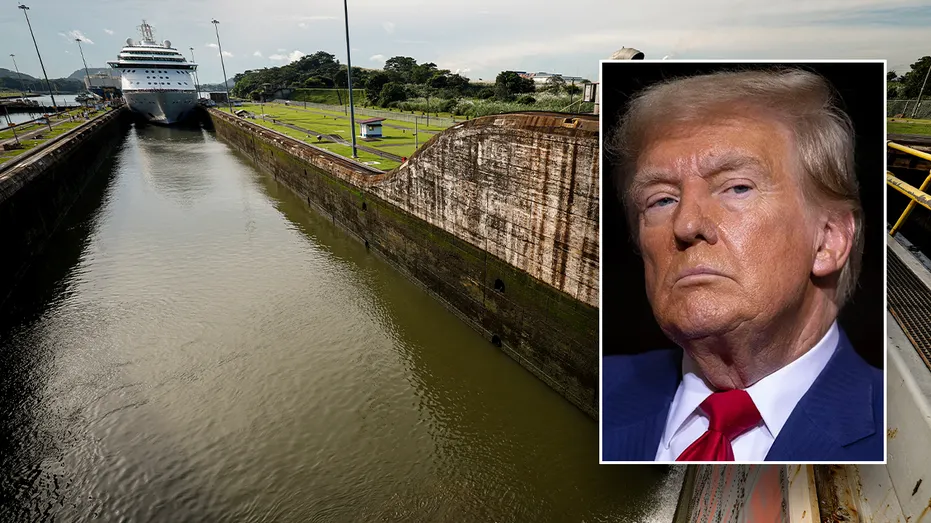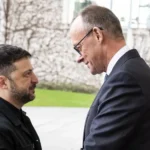
United States President Donald Trump reaffirmed his interest in recovering control of the Panama channel, increasing tensions between the US and China in Latin America.
During his inaugural speech on January 20, Trump highlighted the need for the US to resume its influence on strategic infrastructure, considered vital to the country’s safety and trade.
Three days after the speech, American Senator Eric Schmitt presented a resolution in Congress by asking the Panama government to end the Chinese management of strategic ports in the country and reaffirm the permanent neutrality of the channel as stipulated in the 1977 neutrality treaty.
Main demands of the resolution
Schmitt’s resolution includes the following proposals:
- Review and termination of concessions that allow Chinese companies to manage strategic ports in Panama.
- Panamanian government commitment to the neutrality of the Panama Canal.
- Search for partnerships aligned with democratic values that protect the security of the Western hemisphere.
In addition, the document suggests that the US provides investments to modernize the channel’s infrastructure, reducing Panama dependence on companies linked to the Popular Republic of China.
Hutchison Ports Holdings, a company controlled by the Hong Kong Li Ka-Shing tycoon, was cited in the resolution. She manages the ports of Balboa and Cristobal and has been criticized for her connection with Chinese interests.
Increased Chinese influence in Latin America
In recent years, China has significantly expanded its economic presence in Latin America. According to the Economic Commission for Latin America and the Caribbean (Cepal), trade between China and the region reached US $ 489 billion in 2023, compared to US $ 18 billion in 2002. In addition, direct Chinese investments in the region totaled $ 9 billion in the same period.
Chinese President Xi Jinping has also reinforced the country’s presence in the region through major infrastructure projects, such as Megaporto de Chancay, Peru, inaugurated in November 2023. The work is part of the Chinese Cinturão and Route initiative, which aims to expand global commercial connectivity.
American authorities have expressed concerns that Chinese economic influence can be used for political and military gains. Mauricio Claver-Carone, a special US envoy for Latin America, suggested that tariffs up to 60% could be imposed on projects from projects from China, such as Chancay Port.
Trump’s position on the Panama Canal
Trump was emphatic in defending the need for the US to resume control of the Panama Canal. During a press conference on January 7, he did not rule out the use of military force to achieve this goal.
“The Panama Canal has been foolishly delivered to Panama, and is now under the influence of China. This situation cannot continue, ”Trump said in his inaugural speech. He also criticized the current management of the channel, stating that “American ships are being treated unfairly.”
In response, the Panamanian government has announced an audit at Hutchison Ports to verify compliance with the company’s contractual obligations in relation to the Balboa and Cristobal terminals. The Panama General Controller, Bolo Flores Ring, promised to ensure that national interests are preserved.
Reactions of Panama and China
Panama President José Raúl Mulino said in December that the country’s sovereignty over the channel is not negotiable and denied any direct or indirect control of China over its administration.
Mao Ning, spokesman for China’s Foreign Ministry, also rejected Chinese interference allegations, noting that “we respect Panama’s sovereignty over the channel and recognize its neutrality.”
Relations between China and Panama were formalized in 2017, when the country cut historical diplomatic ties with Taiwan. In 2018, Panama officially joined the belt and route initiative, reinforcing the partnership with Beijing.
History of the Panama Canal
Built by the US between 1904 and 1914, the Panama Canal was a strategic and economic landmark for the country. The project cost approximately $ 375 million at the time (equivalent to $ 10 billion in 2025) and involved the loss of thousands of lives, especially West Indies workers.
In 1977, Presidents Jimmy Carter, from the US, and Omar Torrijos, from Panama, signed the Panama Channel treaty, which guaranteed the country the total control of infrastructure from 1999.
The current controversy on Chinese influence on the channel and US efforts to resume it emphasizes the growing dispute between the two powers for hegemony in Latin America. The outcome of this situation can redefine the region’s economic and political dynamics in the coming years.
With information from Asia Times
Source: https://www.ocafezinho.com/2025/01/28/plano-de-trump-sobre-o-canal-do-panama-aprofunda-a-guerra-diplomatica-com-a-china/

